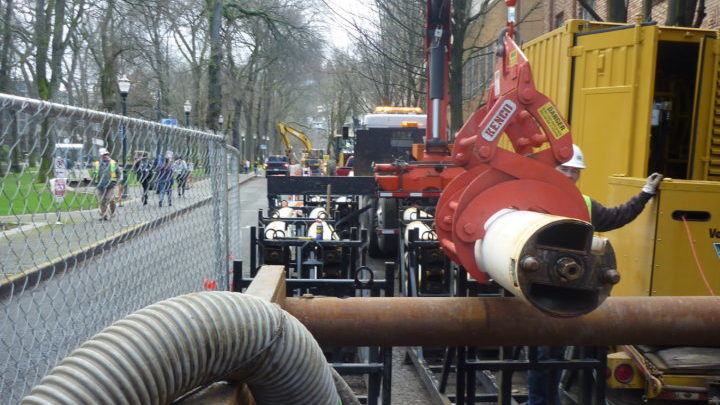All too often, project managers will choose a pipeline installation method simply because they’ve used it more often in the past or it’s cheaper, when in reality a different approach could be far better suited for the job.
Both microtunnelling and horizontal directional drilling (HDD) are trenchless boring methods of pipeline installation, however, there are a few key differences that can help determine which method is best for your project. Microtunnelling is a pit-launched technique with extreme accuracy and low risk, but it has a high upfront cost. One the other hand, HDD is surface launched, making it cheaper than microtunnelling. However, it has a higher risk as it is less precise and there is a risk of flex along the pipeline.
Understanding these differences and choosing the best one for your project could be the difference between a painless, streamlined installation, and a job that drags over-budget and time, and is more likely to have problems in the future.
- Accuracy
Microtunnelling is a pit-launched pipe jacking technique that involves the use of a remote-controlled tunnelling machine, usually with a laser-guided boring system. These machines can typical achieve an accuracy of +/-10mm, making it perfect for jobs that require extreme precision.
Typically, HDD can average an accuracy of +/-100mm, making it the less precise option compared to microtunneling. This isn’t a huge issue in pressure-based applications like pump sewer systems, but for projects like gravity sewers that require gravity to transport material, a 90mm-plus margin of error can make a significant difference.
If your project requires a high level of precision, microtunnelling is the best installation method.
- Upfront cost
HDD is surface-launched and doesn’t require a pit to begin boring — a team on the surface steers the drilling, bending the tunnel until it reaches its intended grade. The lack of a pit means that HDD projects can be completed relatively quickly.
Unlike HDD, microtunnelling is a below-ground method that requires shafts to be dug at each end of the pipeline and refilled upon completion of the project. This process takes time and contributes to microtunnelling’s typically higher price tag compared to HDD.
If upfront cost is a concern for your project and a precise installation is not required, HDD is the best installation method.
- Long-term risk
The flexible nature of HDD that makes installations faster may ultimately lead to more time invested down the road. Bends in the pipeline can become weak points — that means increased maintenance costs and a higher risk of major failure.
Microtunnelling’s ridgid, straight, pit-to-pit design offers greater pipeline integrity. While the upfront costs may be higher, the long-term savings on maintenance costs and lower risk of failure give microtunneling the edge here.
If you want to reduce the cost maintenance and repair in the long term, microtunnelling is the best installation method.
Bottom line
While the initial costs and timeframe of an HDD installation are often less than microtunnelling, a long-term perspective reveals a different picture. The risk of higher maintenance costs and increased chance of pipe failure when using HDD could outweigh the costs microtunnelling.
What it comes down to is budget and risk tolerance — if you are working within a smaller budget, and accuracy and long-term costs are not a major consideration, than HDD could be the way to go. But if the pipeline is required to be installed accurately or long-term costs need to be considered, then the best option is to spend the bit extra for microtunnelling.
Here’s the bottom line: while horizontal directional drilling may be cheaper at the start, microtunnelling’s accuracy and reliability gives it the advantage in the long run.
Wherever you are in Australia, contact Edge Underground on 1300 522 533 (JACKED) to discuss your microtunnelling job.

